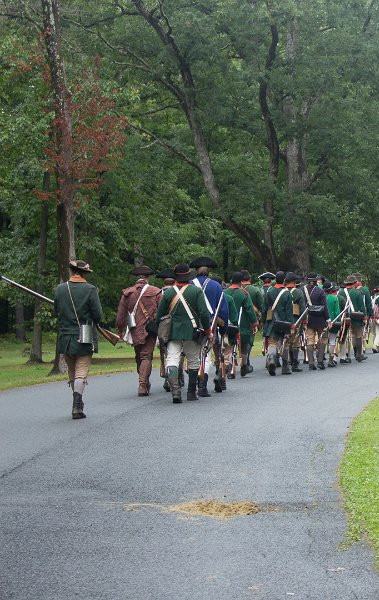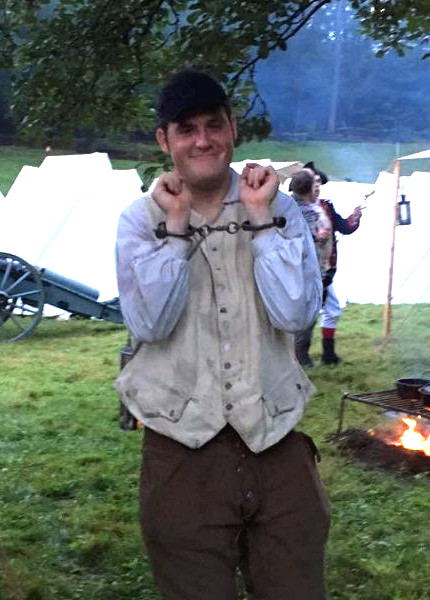
Surrendering
Fighting to the death appears ridiculous to the public, so if you are about to be overrun & cannot escape, surrendering is a good alternative. Before deciding to surrender or accept prisoners, assess the situation: Do not surrender where dragoons or artillery are, or will be active, or in a fluid situation where lines are moving back & forth quickly; you may be stuck between the lines at an awkward moment. Surrendering takes some time. Keep in mind that in the vast majority of cases, you are now out of the action.
Basic points on surrendering:
- A clubbed musket1 is the sign of surrendered/surrendering units or soldiers. Clubbed arms traditionally provide a minimum protection on the field, units with clubbed arms are not to be engaged.
- Only an Officer may take the sword of the surrendering Officer. No 18th Century gentleman would surrender his sword to an enlisted man –
- It is common to return the sword of a surrendering officer if he & his unit have fought well & honorably.
- Only Officers may grant or receive Parole (giving his word not to engage in hostilities until properly exchanged or released). A Commanding Officer may give the parole for his entire unit.
- Treat surrendering units with respect & honor. To do otherwise would be to ask that your men be humiliated in return.
If a unit surrenders to us:
- The senior Officer/NCO sends a representative to confirm the request for surrender, keeping the opposing force under cover. If an Officer is required to address another Officer for honor, send a runner for one.
- Instruct the prisoners through their senior Officer/NCO.
- Have the opposing force secure (dump charges, open pans, & ease springs) then club or ground their weapons.
- Provide a guard of 1-5 men to surround the prisoners.
- If necessary (or possible), move the prisoners to a secure location. Keep the prisoners close together & within the guard.

Clubbing Muskets
From Shoulder Firelocks!
- Seize the piece with your right hand on the inside, at the height of your chin, turning the thumb downwards, & the back of the hand towards you, raising it perpendicular from your shoulder.
- Turn the piece briskly with your right hand, bringing the butt uppermost, & the lock outwards to the front, keeping your right hand at the same height of your chin, & seize with your left hand about an inch from the end of the stock, holding it perpendicular, over-against your left shoulder, & about six inches from it.
- With your left hand bring the piece briskly against your shoulder; drop the right hand quickly to the side, palm toward the thigh.
From Club Firelocks! to Shoulder Firelocks!
- Seize the piece at the swell of the tail-pipe with your right hand, the thumb turned downwards, & the back of the hand towards you, raising it perpendicular from your shoulder.
- Turn the muzzle upwards, & place your left hand under the butt, taking care to bring the barrel outwards to the front, & holding it perpendicular over against your shoulder, & about six inches from it.
- With your left hand bring the piece briskly against your shoulder; drop the right hand quickly to the side, palm toward the thigh.
1 It was not necessarily the only signal of surrender. Additionally, a clubbed musket was also used to signal that the troops were off duty, such as when they were dismissed from guard duty. The motion was not included in the 1764 or subsequent manual of arms, so it was no longer formally taught to British infantry troops, but was likely recognizable by tradition. An in depth article by Don Hagist on clubbed muskets is at the Continental Line web site.
